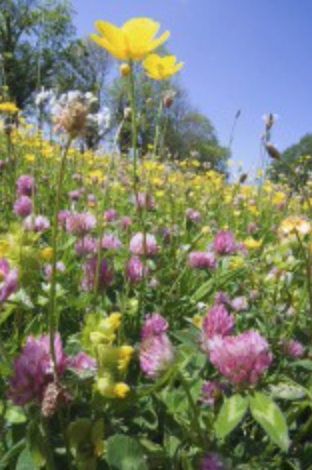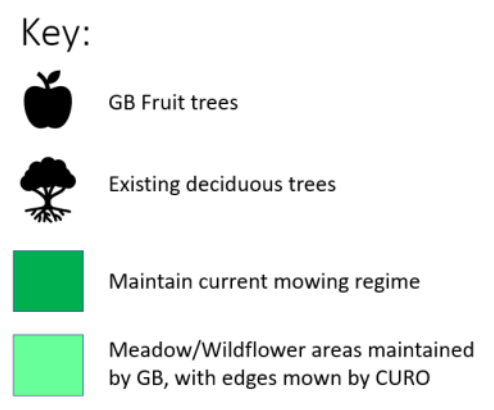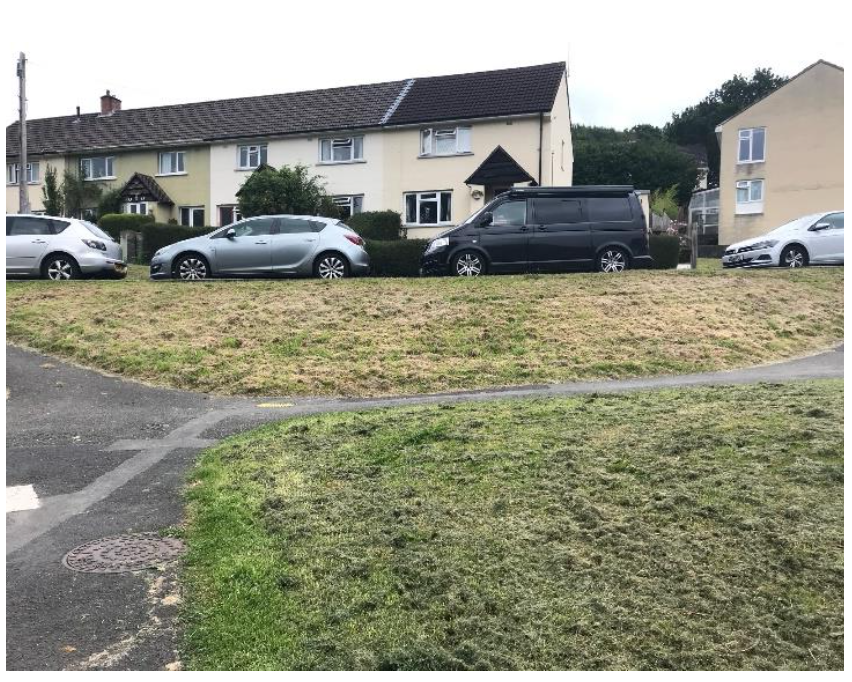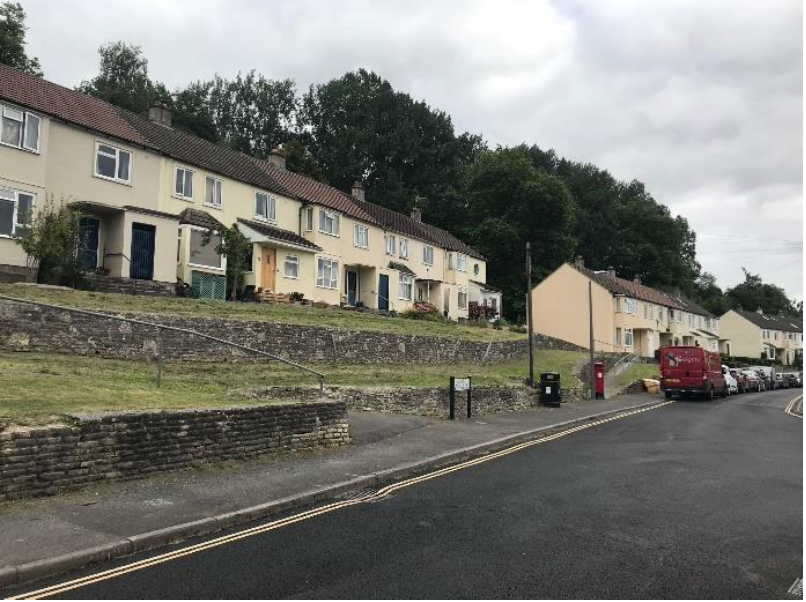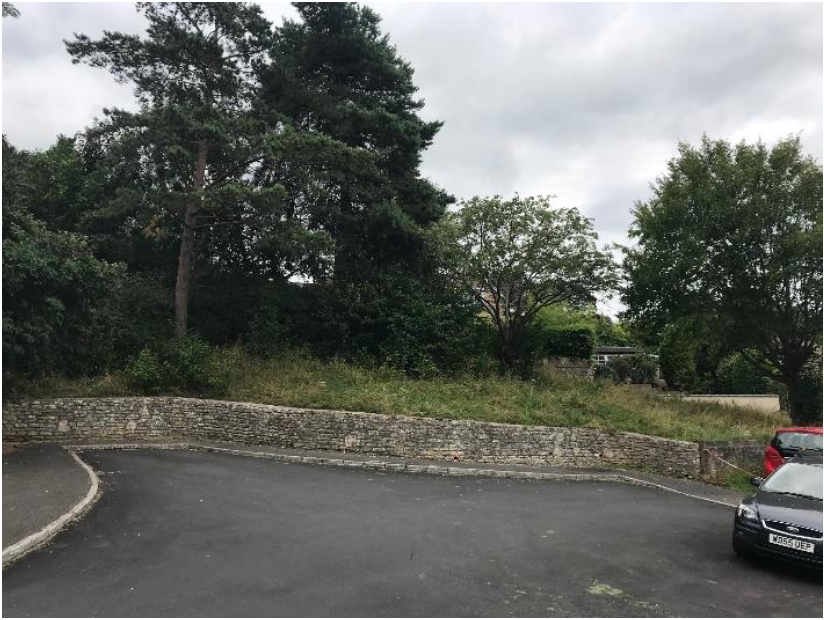Wild flower meadows project on the Elmhurst Estate
Meadow mix for clay soils
At the end of October 2020 members of Grow Batheaston planted over 40 fruit trees around the Elmhurst Estate and Catherine Way. This was in consultation with CURO and B&NES Council. This is part of a wider initiative to ‘green up’ the area and improve biodiversity. B&NES declared a climate emergency in July 2020, in response to escaping threat to wildlife and ecosystems in the area. Spring bulbs were also added, then snowdrops and some trailing plant around the many walls on the estate.
Our next initiative is to create several meadow features around the estate throughout November, and after taking advice from experts (Donald Macintyre from Emorsgate Seeds) we were advised to let the grass grow for the first year to ‘see what comes up’. Many areas in Bath seem to be taking this approach and ‘No Mow May’ is certainly growing in popularity.
Why create Meadows?
Meadows and other species-rich grass land now cover less than 1% of the UK. Inadequate protection, changing farming practices and a lack of public awareness has caused 97% to be lost in less than a century. In a world where the effects of climate change are becoming more and more prevalent increasing the amount of our species-rich grassland is vital (Plantlife.org.uk) as meadows act as a store for carbon. Meadows are an ancient habitat and benefits include providing a home for pollinators, preventing flooding and storing carbon, creating healthier animals and food.
The Meadow Mixture for Clay soils (From Emorsgate Seeds) is a mixture of the following wild flowers and grasses (common names supplied) Wild Flowers- Yarrow, Agimony, Betony, Common Knapweed, Crossword, Wild Carrot, Meadowsweet, Lady’s Bedstraw, Rough Hawkbit, Oxeye Daisy (Moon Daisy) Musk Mallow, Black Medick, Ribwort Plantain, Meadow Buttercup, Yellow Rattle, Common. Sorrel, Pepper Saxifrage, Bladder Campion. Grasses - Common Bent, Sweet Vernal-grass, Quaking Grass, Crested Dogstall, Red Fescue, Smooth-stalked Meadow Grass. For Latin names see here
Locations and permissions
The land around the estate is mixed ownership, with specific areas assigned to CURO and some B&NES responsibility. Following a meeting with Lynn Quick (CURO), Colin Hall (B&NES Parks), Catherine McCarthy (BPC) and GB members (Emily Wright, Alison Harper, Ali Rogers) on 25th August 2021, we aligned on selected areas to develop as meadow-type spaces. Decisions on these areas are based on what would be best locations to introduce this as an initiative. This management plan outlines future plans/timelines and also agreement about the mowing requirements, primarily fulfilled by CURO’s contractors.
Management of specified areas
In working with CURO and B&NES we have agreed a plan which enables the area to better support local wildlife, enabling residents to benefit from a green and nature rich environment, providing a point of interest for locals, whilst providing an attractive setting which is not viewed as neglected oruntidy, but is seen to be managed as a habitat and acknowledging the benefits that this brings.
Members of the Grow Batheaston team were lucky enough to take part in a Meadow Workshop Day at the Emorsgate wildflower seed farm in Langridge. An initial approach was discussed as to what can seem a very complicated process. The soil on this site is mainly clay and so Grow Batheaston hope to acquire a special mixture for clay soils.
The main aim in creating a suitable environment for wildflowers to thrive is to control and dissuade the growth of coarse grasses which will take over and smother the more delicate flowers. This can be done through including annual yellow rattle seed in the mix, which is parasitic on grasses. We have also sought advice from Rob Kendall, who has been very helpful. Meadows take several years to develop, and we acknowledge that the results may not be instant.
Grow Batheaston will engage the local community in the establishment of the meadow for the future enjoyment for all. Conversations had with residents so far whilst working on the orchard slope site have been very supportive.
Orchard slope (CURO)
The current area has been left to long grass around the fruit trees, with a cut occurring in July 2021. Below are images of the area taken in June 2021
Orchard Slope (CURO)
Below is the intended meadow plan, with specific areas to be continued to be mown and some areas to be scarified and seeded with appropriate meadow seed in Autumn 2021. We envisage selected areas to be transformed to meadow, with selected areas mown and the edges of the meadow to be mown as is now standard on public land.
Orchard slopes plan
Orchard Slopes Key
Muddy Lane (B&NES)
The section at the top of Muddy lane where the pathway splits towards housing, parallel to Catherine Way has been identified as meadow space with trimmed edges.
Verge opposite the top of Muddy Lane
Photo of the verge opposite the top of Muddy Lane
Elmhurst Hill, Coalpit Road (CURO)
This area is at the top of Coalpit Road on the Elmhurst estate, this sits directly behind a recess area which is already agreed with CURO as a location for a Grow Batheaston sharing shed funded by a Parish Council Grant and currently in the B&NES planning permission process.
Planned section at the top of Elmhurst Hill
Photo of the section at the top of Elmhurst Hill
Elmhurst estate/Fosse Lane (CURO)
This area has already been planted with fruit trees by Grow Batheaston, it is quite a steep slope with long grass which is one a one-cut regime in October/November. We have agreed that this space is best planted with individual wildflowers. Examples of plant species might be Red Valerian, Meadow Cranesbill, Mullein, Purple Toadflax
Elmhurst Estate / Fosse Lane Plan
Elmhurst Estate / Fosse Lane photo
Elmhurst estate/Catherine way (CURO and B&NES)
This section of green space requires further thought on what might benefit here. Considerations are:
Public access up to Bannerdown woods
A tree that is anticipated to be removed (past discussions with Joe Robson, CURO tree management), and could be replaced with GB nut trees, fruit bushes
The conifer on the corner has been a seasonal feature of the village at Christmas over the last couple of years (e.g., wooden reindeers, Christmas decorations) and so would benefit from some public engagement on this space.
Residents local to this green space have expressed other uses in the past which have yet to be explored such as a natural play area.
Milestone Overview Year 1 – 2021
Prepare the area to create the right conditions.
Note plants/vegetation.
Cut in September, clear cuttings, scarify to reveal areas of bare earth on which seeds can be scattered. Approximately 50% bare earth is desirable.
Autumn - sow wildflower mix suitable for clay, add annuals - tread in.
Year 2 - 2022
Establish species which support wildflower growth.
Cutting will be dependent on growth and success of seed planting.
Year 3 - 2023
Gauge success or otherwise of planting scheme. More/different seed needed?
Elmhurst wall planting
There are extensive retaining walls around the Elmhurst Estate and Catherine Way, so we want to improve the look of the walls and increase biodiversity. We agreed to add non-invasive plants around selected walls with CURO. The plants we consider appropriate are aubretia, snow in summer, campanula and maybe some succulents – these are all plants which already feature in pockets of the estate. We are also exploring plants which can be planted which can be planted in green space and will cascade over the walls in a sustainable way. We will provide CURO with a plan to indicate where these are located to ensure that we minimise damage and inconvenience around the cutting of green space. We are primarily focussed on the walls along the top of Elmhurst where there is minimal footfall and we will speak with residents to ensure their support.
Fruit Tree Management
The trees have been regularly inspected as issues rectified, and we have learnt that there is need to consider vandalism/pest damage, health and safety requirements etc. We are already inthe process of arranging tree guards/stronger stakes for ‘vulnerable’ trees.
Community engagement
From discussions it’s understood that there is a lack of understanding around the environmental need to increase biodiversity and how managed meadows and increased planting would benefit not only our appreciation of the place we live but has an impact ecologically. This is an opportunity to help residents appreciate how we can contribute to the climate emergency and how it impacts us locally. In addition, there have been significant complaints about the change in mowing schedules.
Sustainability of approach
Grow Batheaston have now been in existence for over a year and are shortly converting to a charity. We have been recognised in the area as an organisation which has demonstrated successful implementation and an engaged and passionate volunteer base, with full support of all our partnering organisations. We seek to further expland the volunteer base to ensure this projects sustainability and have greater community connectivity. We have a core team of people who will implement this plan, and will raise any issues to resolution with the GB team and partners.
Managing risk and health and safety
We appreciate that in all developments of green space that we need to take into consideration several elements around risk management, including
Social distancing around pathways/car access
Informal usage of space by residents, especially children
Contractors who carry out the management of green spaces
Ticks, a resident mentioned this as a potential issue; however this is not correlated with long grass, but more of a ‘breeding hotspots’ issue which is tracked locally.
Complaints procedure
We appreciate that green space management can be a contentious issue for residents, especially with the last few years and changes in public space management and the financial demand on public sector organisations. We are prepared to addess any resident complaints directly on behalf of the landowners for the areas we are ‘adopting’. All complaints can be forwarded to hello@growbatheaston.co.uk and one of the GB team will speak with the resident to establish their concerns/requests.

